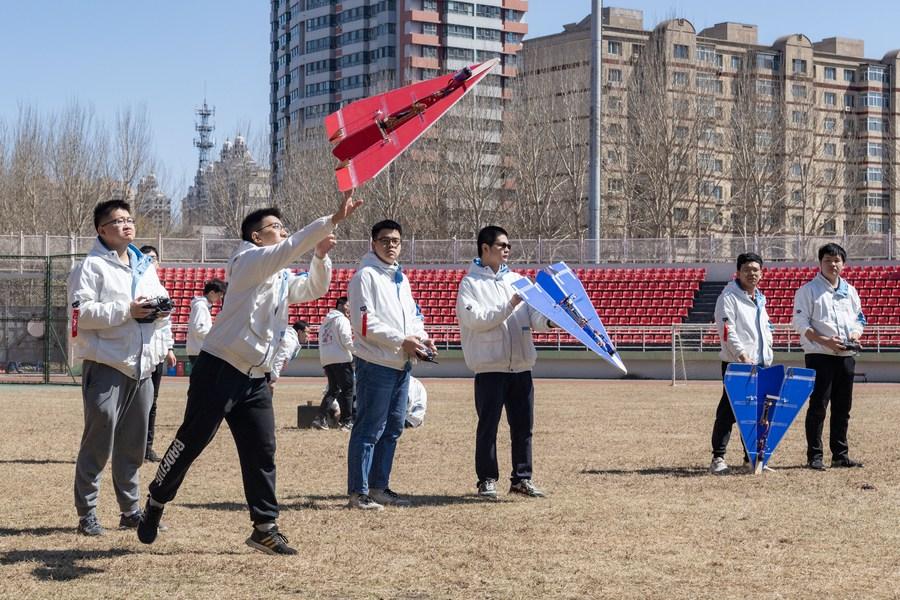Source:Xinhua 2023-05-09

Students from the aviation model association of Harbin Institute of Technology launch a model airplane on campus in Harbin, capital of northeast China's Heilongjiang Province, on April 22, 2023. (Xinhua/Xie Jianfei)
BEIJING, May 8 (Xinhua) -- China has sent a clear signal to adapt to the new normal in its demographics in an effort to boost modernization by improving the overall quality of its population.
According to a meeting of the Central Commission for Financial and Economic Affairs held last week, China is currently experiencing a trend of birthrate decline, population aging, and differentiation in regional population growth.
The latest official data showed that China's population reached 1.41175 billion at the end of 2022, a drop of 850,000 from that at the end of 2021.
"A slight decline in population size and an increasingly aging society are inevitable during the economic and social development," said He Dan, head of the China Population and Development Research Center.
But China's supply of workforce remains rich, given its population of more than 1.4 billion. Besides, the country's working-age population is close to 900 million, and 15 million more join the workforce every year.
At the same time, China's talent dividend, as a result of more education input, is growing. More than 240 million people in China have received higher education. The number of research and development personnel in China ranks top in the world.
To advance Chinese modernization, last week's meeting said China should speed up the development of modern human resources with good quality, sufficient quantity, optimized structure, and reasonable distribution.
Over the past years, education has proved to be an important channel in improving the quality of China's population and has created a growing talent dividend.
According to the meeting, China will take the building of educational power as a strategic project, and comprehensively improve the scientific and cultural literacy, health, intellectual and moral levels of the Chinese people.
Responding to population aging, Lu Ming, a professor at Shanghai Jiao Tong University, said the country can tap into the experience and wisdom of senior citizens.
Among Chinese seniors aged 60 years and over, around half are between 60 and 69, according to Lu. A lot of them have advantages in knowledge, experience, and skills, and their health is still good, Lu added. They can continue to make contributions to society on a voluntary basis.
While highlighting the work to develop human resources, Hu Zuquan, a researcher with the State Information Center, stressed the need to safeguard population security.
Last week's meeting underscored more efforts to maintain an appropriate birthrate and population size. China will develop inclusive childcare services, reduce the burden on families of child-bearing, child-rearing, and education, and promote the building of a child-bearing-friendly society, according to the meeting.
Copyright © Xizang Daily & China Xizang News All rights reserved
Reproduction in whole or in part without permissions prohibited
Index Code: 藏 ICP 备 05000021 号
Producer: Xizang Daily International Communication Center